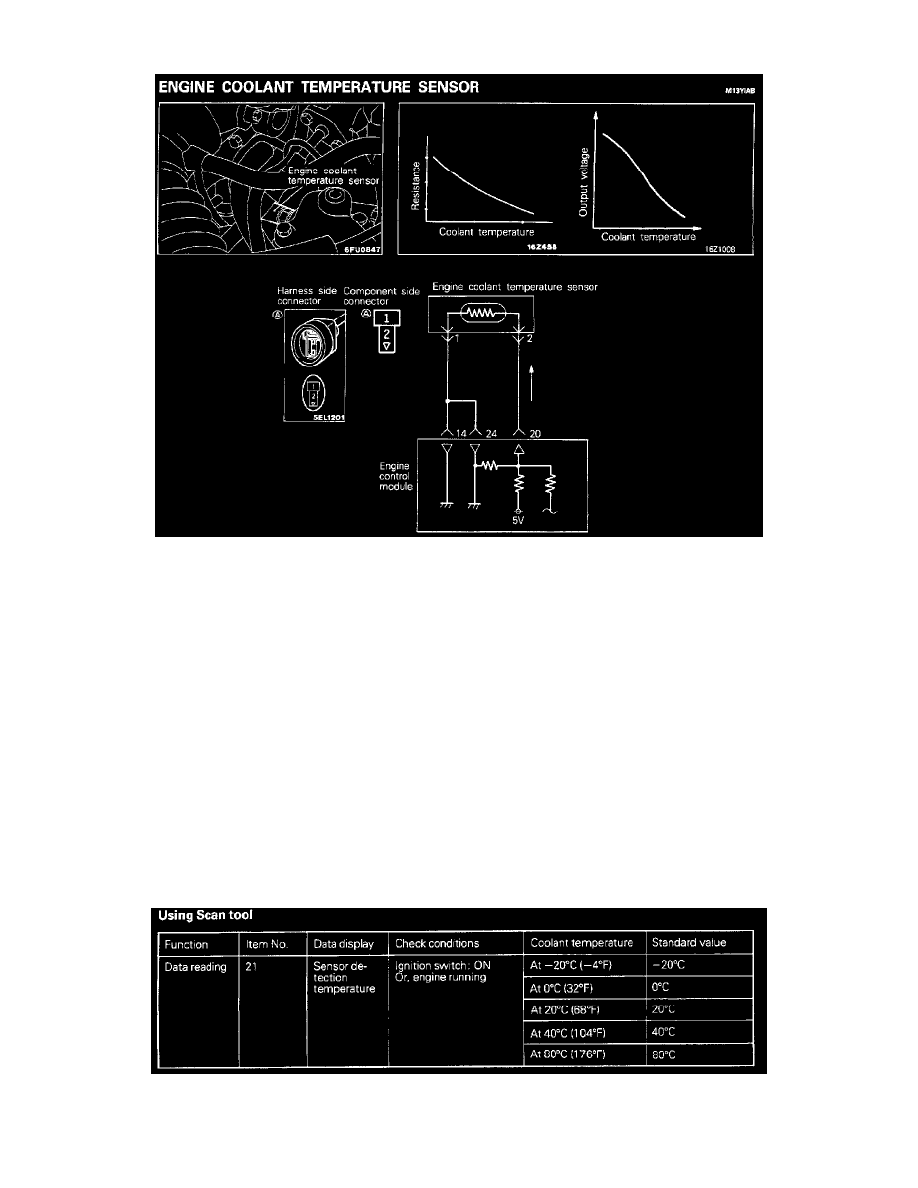Galant L4-2.0L SOHC (1989)

Coolant Temperature Sensor / Switch HVAC: Testing and Inspection
Operation
The engine coolant temperature sensor functions to convert engine coolant temperature to voltage, and to input that voltage (as signals) to the engine
control module.
The engine control module, based upon those signals, regulates the amount ot fuel injection and the fast-idling speed when the engine is cold.
The 5V power supply within the engine control module is supplied, by way of the resistance within the unit, to the engine coolant temperature sensor;
it passes through the engine coolant temperature sensor, which is a type of resistor, and is grounded at the engine control module.
Note that the resistance of the engine coolant temperature sensor decreases when the temperature of the coolant increases.
The engine coolant temperature sensor terminal voltage becomes higher when the resistance of the engine coolant temperature sensor increases, and
becomes lower when the resistance decreases. Consequently, the engine coolant temperature sensor terminal voltage varies in accordance with the
temperature of the coolant, becoming lower when the temperature of the coolant increases.
Troubleshooting Hints
If, during engine warm-up, the fast-idling speed is not correct, or black smoke is emitted the problem is usually a malfunction of the engine coolant
temperature sensor.
Inspection
